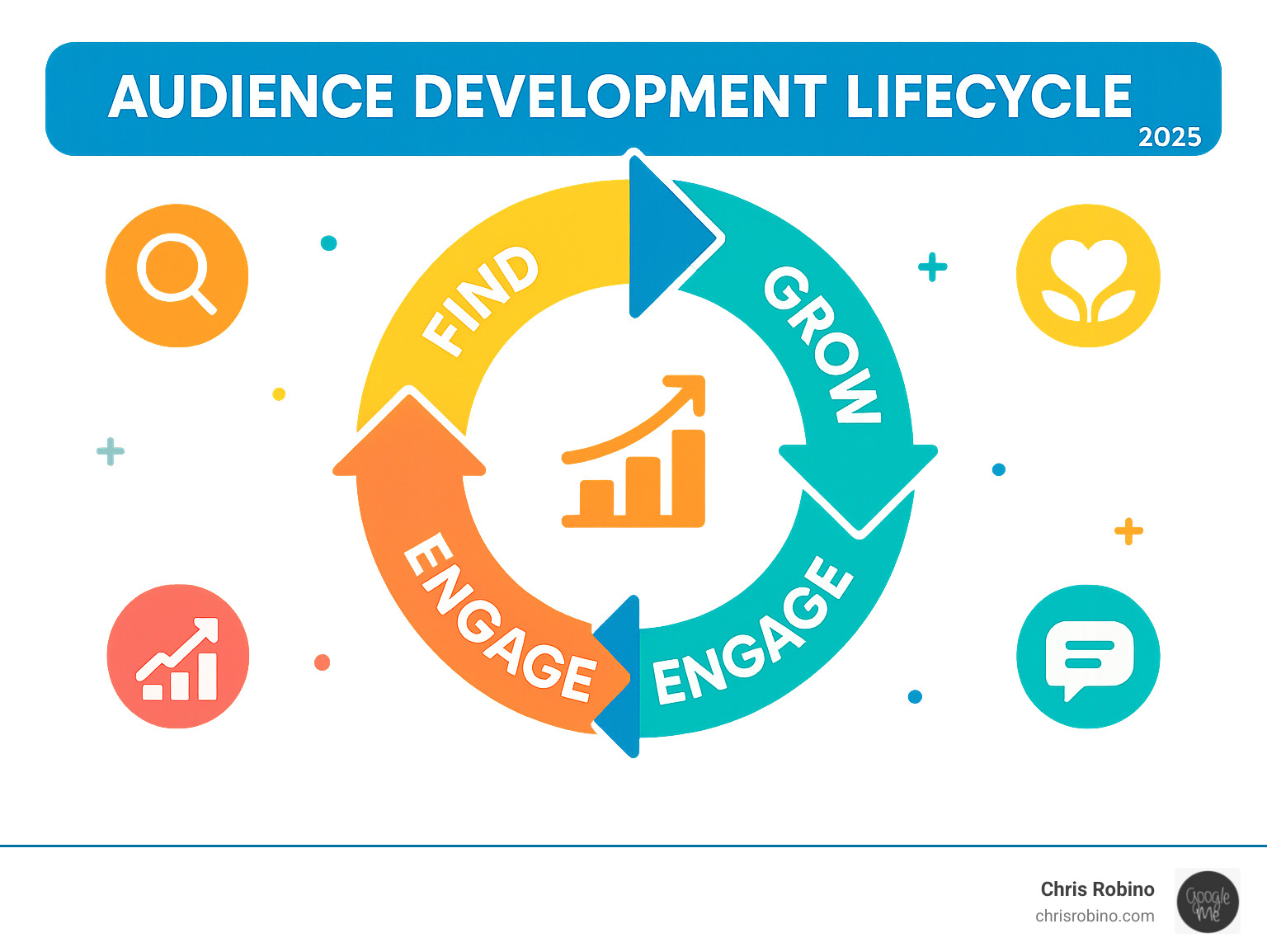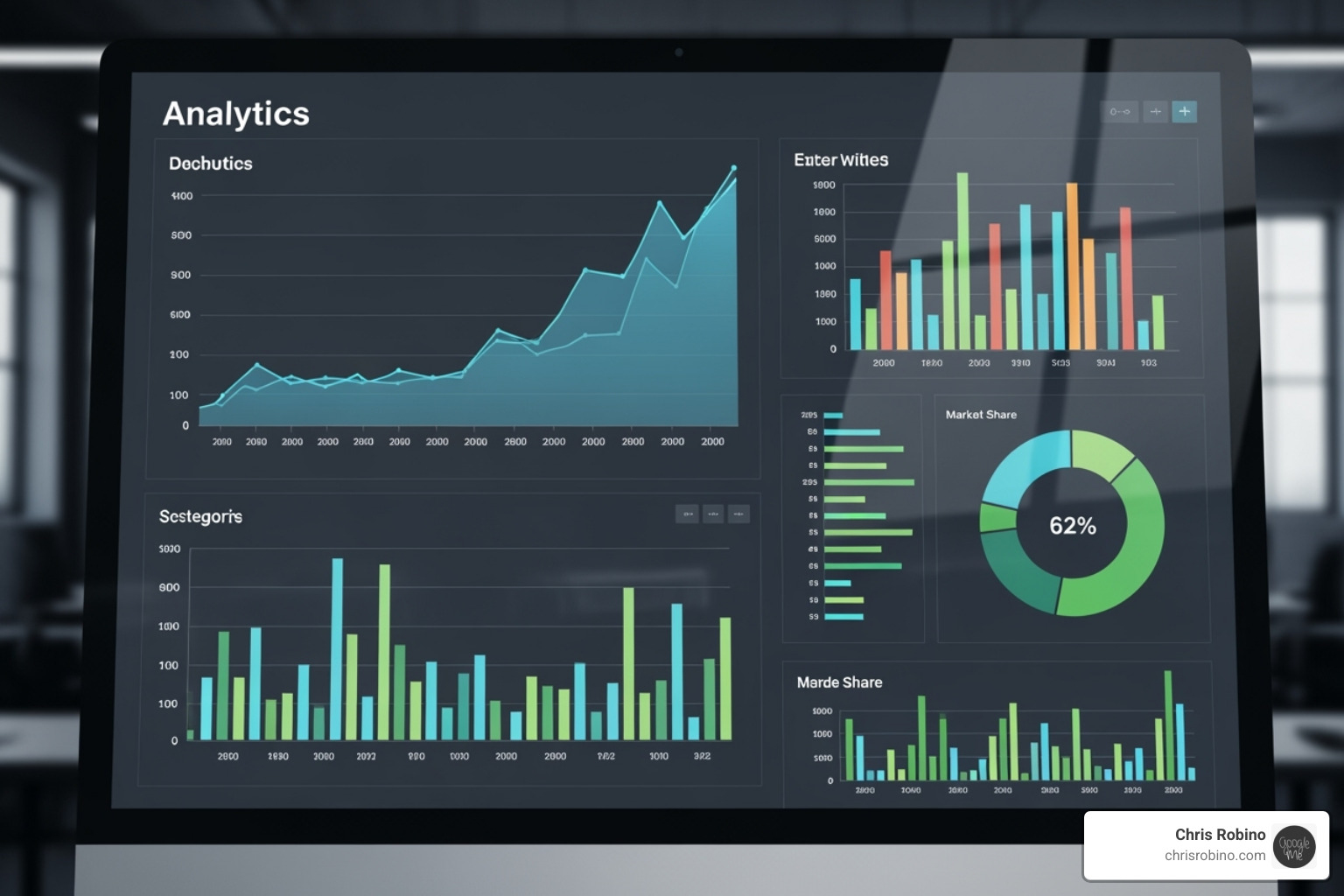The Shift from Renting to Owning Your Audience
Audience development media is the strategic process of building, nurturing, and engaging a community of loyal followers across digital platforms to create sustainable business growth. Unlike traditional marketing that focuses on short-term sales, audience development emphasizes long-term relationship building and community creation.
Quick Definition:
- Focus: Building relationships vs. driving immediate sales
- Goal: Sustainable audience growth vs. campaign-based results
- Approach: Community-centric vs. product-centric
- Metrics: Engagement and loyalty vs. conversion rates only
- Timeline: Long-term investment vs. short-term campaigns
The marketing landscape has fundamentally changed. Recent psychological studies show humans spend just 47 seconds on any computer screen before switching to another task – down from two and a half minutes in 2004. This shrinking attention span has made traditional “rent an audience” marketing increasingly expensive and ineffective.
Smart businesses are shifting from renting audiences through paid ads to owning their audience through direct relationships. As one industry expert noted: “It used to be the brand with the biggest media budget that had the most power. Today, it’s the brand with the biggest audience that’s likely to have the most power.”
The internet has removed traditional media gatekeepers, giving brands the ability to communicate directly with their audiences. This shift has made audience development not just useful, but essential for sustainable business growth.
The benefits are clear:
- 88% of consumers trust recommendations from people they know
- 63% of consumers expect personalization as a standard service
- Companies focusing on audience development see 4.5x more leads than those publishing sporadically
I’m Chris Robino, a seasoned Digital Strategy Leader with over two decades of experience helping organizations transform their online presence through strategic audience development media initiatives. Throughout my career, I’ve guided businesses from tech startups to established enterprises in building sustainable audience relationships that drive measurable ROI.

The Core Principles of Audience Development Media
Defining Audience Development: Beyond Traditional Marketing
Audience development media represents a fundamental shift in how we think about connecting with people online. Instead of chasing quick sales through expensive ad campaigns, we’re building lasting relationships that create genuine value for both our audience and our business.
Think of it this way: traditional marketing is like speed dating – you’ve got minutes to make an impression and close the deal. Audience development is more like cultivating a friendship. You invest time, show genuine interest, and build trust that pays dividends for years to come.
The differences between these approaches are striking:
| Feature | Audience Development | Traditional Marketing |
|---|---|---|
| Focus | Building relationships and community | Driving immediate sales or campaign conversions |
| Goal | Sustainable engagement, loyalty, and advocacy | Short-term revenue, lead generation |
| Metrics | Engagement rates, retention, sentiment, lifetime value | Conversion rates, click-through rates, ROI (short-term) |
| Timeframe | Long-term investment, continuous nurturing | Campaign-based, often episodic |
| Primary Asset | Owned audience, first-party data | Purchased media, third-party data |
| Cost | Potentially less expensive (word-of-mouth, organic) | Often higher (paid advertising) |
What makes audience development media so powerful is its focus on the human element. We’re not just selling products; we’re solving problems, sharing stories, and creating experiences that matter to real people. This approach naturally builds the trust that’s become so crucial in today’s skeptical marketplace.
Here’s a sobering reality check: while 86% of consumers find authenticity valuable when supporting a brand, many still create content that feels manufactured or pushy. When we prioritize genuine connection over sales pressure, we stand out in a crowded digital landscape.
The secret sauce of effective audience development lies in first-party data – the information we gather directly from our website visitors, email subscribers, and social media followers. This isn’t just nice-to-have information anymore. With 63% of consumers expecting personalization as a standard service, understanding our audience through our own data becomes essential for creating experiences that truly resonate.
For businesses ready to accept this strategic shift, our Digital Strategy Advice provides actionable frameworks for building these deeper audience relationships.
Key Strategies for Effective Audience Development Media
Building a loyal audience isn’t magic – it’s a methodical process that combines smart planning with consistent execution. The most successful audience development media strategies focus on creating genuine value while building sustainable systems for growth.
Content serves as the cornerstone of everything we do. But we’re not talking about random blog posts or generic social media updates. Value-driven content solves real problems, answers burning questions, or entertains in ways that strengthen the relationship between brand and audience. When content consistently delivers value, it transforms casual visitors into engaged community members.
Strategic SEO integration ensures our valuable content actually gets found. Companies that blog consistently receive 97% more backlinks than those that don’t, creating a compound effect that boosts visibility across search engines. The key lies in understanding what our audience searches for and crafting content that genuinely answers those queries. Our guide to Search Engine Rankings dives deeper into these optimization strategies.
Social media platforms offer direct communication channels with our audience, but success requires strategic focus rather than scattered presence. Instead of trying to be everywhere at once, we identify where our specific audience spends their time and where meaningful conversations actually happen. The goal isn’t just posting content – it’s fostering genuine interactions that build relationships.
Strategic partnerships and collaborations amplify our reach through established trust networks. Since 88% of consumers trust recommendations from people they know, partnering with creators and influencers who already have our audience’s trust can introduce our brand to new, relevant communities while building mutual credibility.
Every successful audience development strategy requires three essential components: detailed audience personas that help us understand exactly who we’re serving, clear content pillars that define the core themes and topics we’ll consistently address, and a focused channel strategy that prioritizes platforms where our efforts will yield the best results.
The digital landscape constantly evolves, with platform algorithms changing and new technologies emerging. Tools like AI-Driven Content Strategy help us analyze trends, predict audience behavior, and optimize our content creation process for maximum impact while maintaining the human connection that makes audience development so powerful.
Leveraging Data and Nurturing Loyalty
Once we’ve attracted an engaged audience, the real work of audience development media begins: turning casual followers into loyal advocates who actively champion our brand. This change happens through careful data analysis, personalized experiences, and genuine community building.

Data-driven decisions form the backbone of successful audience nurturing. By analyzing patterns in audience behavior, preferences, and engagement, we can create increasingly personalized experiences that make people feel truly understood. This isn’t about collecting data for its own sake – it’s about using insights to serve our audience better.
The metrics that matter most go far beyond follower counts. Engagement rates tell us whether our content truly resonates with people. Retention metrics reveal how many people come back for more, which often matters more than attracting new followers. Time spent with our content indicates genuine interest rather than casual scrolling. Lifetime value helps us understand the long-term impact of our audience relationships.
Personalization builds trust in ways that generic content never can. When we use our data to deliver customized experiences and exclusive offers, 53% of consumers feel recognized as individuals rather than anonymous numbers. This personal attention creates the emotional connection that transforms casual followers into brand advocates.
Community building turns individual relationships into a thriving ecosystem where audience members connect with each other, not just with our brand. We facilitate conversations, encourage user-generated content, and create spaces where people feel they belong to something larger than themselves. When audience members share their own stories, photos, and experiences related to our brand, they become active participants in our narrative rather than passive consumers.
The authenticity that drives successful community building aligns perfectly with consumer expectations. Since 88% of consumers trust recommendations from people they know, fostering genuine relationships creates powerful word-of-mouth marketing that money can’t buy.
This continuous cycle of data analysis, personalization, and community nurturing drives Innovation in Media Companies by creating sustainable competitive advantages that adapt to changing digital trends while maintaining the human connections that make brands memorable and beloved.
Conclusion: Building a Sustainable Future for Your Brand

The journey from renting audiences to owning them isn’t just a marketing trend—it’s a fundamental shift toward building something truly valuable and lasting. Throughout this exploration of audience development media, we’ve uncovered how this approach transforms the way brands connect with people, moving beyond transactional relationships to create genuine communities.
Think about it: when you build an engaged audience, you’re creating an asset that appreciates over time. Unlike paid advertising that stops working the moment you stop paying, a loyal community continues to grow, advocate for your brand, and bring new members into the fold. It’s the difference between renting a house and owning one—you’re building equity that compounds.
The strategies we’ve discussed—from crafting value-driven content and optimizing for search visibility to leveraging social platforms and forming strategic partnerships—all work together to create this sustainable foundation. Each piece reinforces the others, creating a system that becomes stronger and more effective over time.
But perhaps most importantly, we’ve seen how data-driven personalization transforms casual visitors into devoted community members. When 63% of consumers expect personalized experiences and 88% trust recommendations from people they know, the brands that master audience development have a significant competitive advantage.
This isn’t about quick wins or viral moments. Building a truly engaged audience requires long-term commitment and a willingness to adapt as digital trends evolve. The brands that succeed are those that view audience development not as a marketing tactic, but as a core business strategy.
The digital landscape will continue to change—algorithms will shift, new platforms will emerge, and consumer behaviors will evolve. But brands with strong, direct relationships with their audiences will weather these changes more successfully than those dependent on rented attention.
As someone who’s guided businesses through these digital changes for over two decades, I’ve seen how audience development media creates sustainable growth that outlasts any single campaign or platform change. The brands that invest in building these relationships today are positioning themselves for success in an increasingly competitive digital world.
Ready to stop renting your audience and start building a community that truly champions your brand? The strategies we’ve covered provide your roadmap, but every successful journey begins with that first step. Learn more about Digital Change for Media and find how to transform your approach to audience building.

